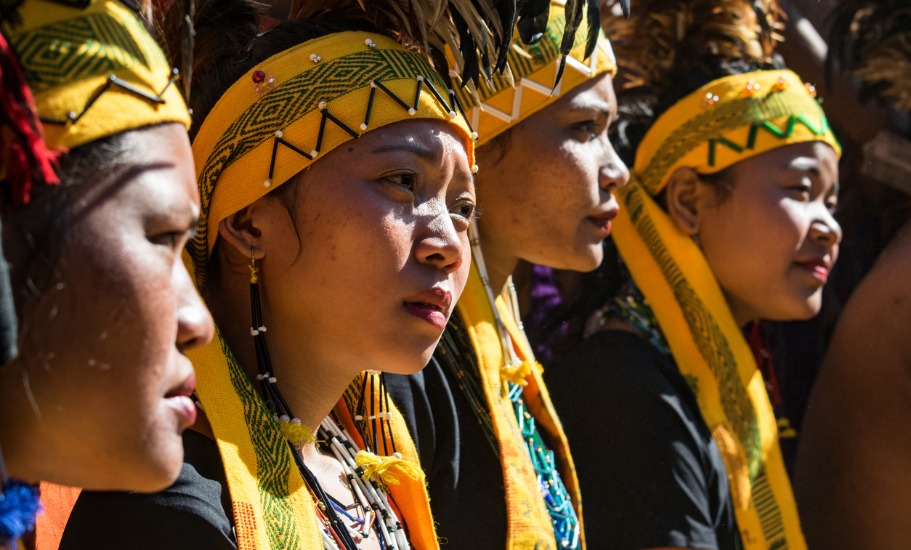
BJP-NDPP focus on eastern Nagaland fails to yield desired result

Promise of “equal development” for eastern Nagaland by the NDPP-BJP alliance seems to have not cut much ice with voters as the allies failed to improve their tally from the region, which has been vocal for a separate state.
BJP brought in Union Home Minister Amit Shah, who had been brokering a deal with organisations demanding Frontier Nagaland state, to campaign in Mon and Tuensang districts. However, the focus on the six districts with 20 seats did not meet with the desired success as both BJP and its major partner NDPP’s tally remained unchanged at 9, the number of seats they won in 2018.
Also read: Poll verdict: BJP juggernaut rolls on in North-East, Congress decline continues
No rise in ruling alliance’s tally
Though the number of seats won remained the same, many of the seats it held earlier were lost and the new ones gained. The party lost two constituencies held by its ministers — Seyochung Sitimi and Longleng — by margins of 930 and 5,270 votes to the NPP and NCP candidates, respectively. It also lost Noklak by 734 votes, which it had won by a margin of just 5 votes in 2018. The saffron party bagged three new seats this time — Phomching, Longkim Chare and Tuensang Sadar I — by margins ranging from 1,500 to 5,600 votes.
Phomching was held by the NDPP in the last assembly, but it was given to the BJP in 2023. NDPP could retain Tapi by a slender margin of 82 votes and Shamatore Chessore by 2,295 votes. It lost Tobu to the LJP (Ram Vilas) candidate by 506 votes and Noksen to the RPI (Athawale) nominee by 188 votes.
NPF vote share declines
The vote share of the Naga Peoples Front (NPF), which once ruled the state, seemed to have been eroded by parties with very limited to almost no presence in the state like RPI (Athawale) and LJP (Ram Vilas). The majority of NPF MLAs joined the NDPP in 2022. The NPF had bagged 10 seats in 2018 in these six districts but couldn’t open its account this year.
While NCP and NPP bagged three seats each, RPI (Athawale) and Independents won two each and the Lok Janskhati Party (Ram Vilas) one.
Also read: Nagaland poll results: Women break glass ceiling; NDPP-BJP inches closer to victory
Uncertainty over poll promises
Shah had termed issues raised by Nagas from the eastern part of the state as legitimate and maintained that the solution to these problems may well be worked out, with NDPP supremo and Chief Minister Neiphiu Rio also asserting that the state government will partner the Centre in its decisions for the region.
However, with the BJP not being able to gain much, analysts said it is a moot question whether poll assurances, made to eastern Naga tribes like the Konyak, Chang, Phom, Tikhir, Sangtam, Yimkhiung and Khiamniungan, for a Frontier Nagaland or greater autonomy will be fulfilled. Organisations there had agreed to withdraw a poll boycott call on the basis of the promises made.
Shah, whose intervention had led the Eastern Nagaland People’s Organisation to withdraw its poll boycott call, in his first election rally in Mon Town, had hinted at more budgetary allocation, additional power to the council and equal development. However, the BJP nominee from Mon lost to the NCP candidate. The constituency was held by the NPF in the last assembly.
Also read: Exit polls: Hung house in Meghalaya; advantage BJP in Tripura; NDPP in Nagaland
Candidates matter more than parties
A leader of a local civil society organisation maintained that candidates matter more than the party in the eastern parts, especially as people there “distrust the bigger parties”.
“The people feel that the major parties, be it the national ones or regional forces, have not kept their promise of development and this part is not at par with towns like Kohima, Dimapur or even Mokokchung. That’s why the focus is more on individuals,” he said.
Besides, politics at the village level also plays an important role in elections here, he claimed. But for the general voters, roads, colleges and job openings, possibly matter more than a separate state or which party forms the government.
(With Agency inputs)


